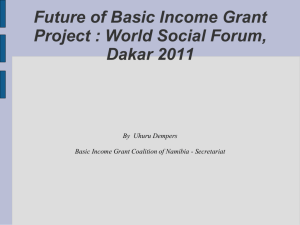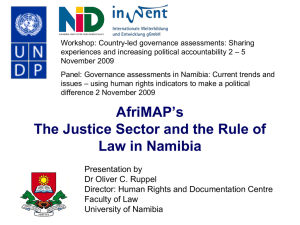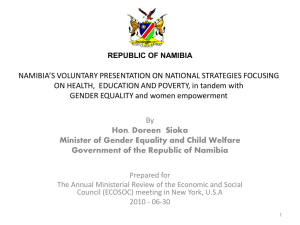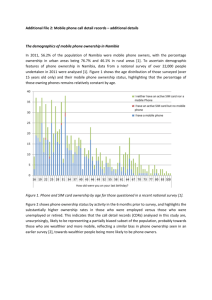The effectiveness of social protection measures
advertisement
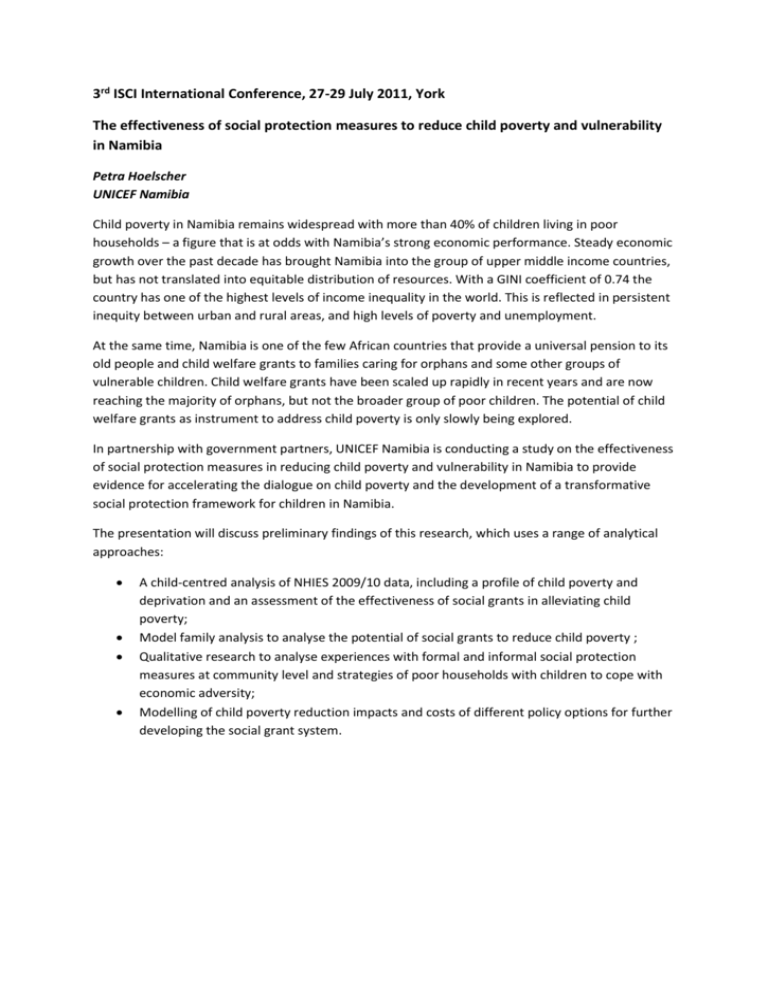
3rd ISCI International Conference, 27-29 July 2011, York The effectiveness of social protection measures to reduce child poverty and vulnerability in Namibia Petra Hoelscher UNICEF Namibia Child poverty in Namibia remains widespread with more than 40% of children living in poor households – a figure that is at odds with Namibia’s strong economic performance. Steady economic growth over the past decade has brought Namibia into the group of upper middle income countries, but has not translated into equitable distribution of resources. With a GINI coefficient of 0.74 the country has one of the highest levels of income inequality in the world. This is reflected in persistent inequity between urban and rural areas, and high levels of poverty and unemployment. At the same time, Namibia is one of the few African countries that provide a universal pension to its old people and child welfare grants to families caring for orphans and some other groups of vulnerable children. Child welfare grants have been scaled up rapidly in recent years and are now reaching the majority of orphans, but not the broader group of poor children. The potential of child welfare grants as instrument to address child poverty is only slowly being explored. In partnership with government partners, UNICEF Namibia is conducting a study on the effectiveness of social protection measures in reducing child poverty and vulnerability in Namibia to provide evidence for accelerating the dialogue on child poverty and the development of a transformative social protection framework for children in Namibia. The presentation will discuss preliminary findings of this research, which uses a range of analytical approaches: A child-centred analysis of NHIES 2009/10 data, including a profile of child poverty and deprivation and an assessment of the effectiveness of social grants in alleviating child poverty; Model family analysis to analyse the potential of social grants to reduce child poverty ; Qualitative research to analyse experiences with formal and informal social protection measures at community level and strategies of poor households with children to cope with economic adversity; Modelling of child poverty reduction impacts and costs of different policy options for further developing the social grant system.

